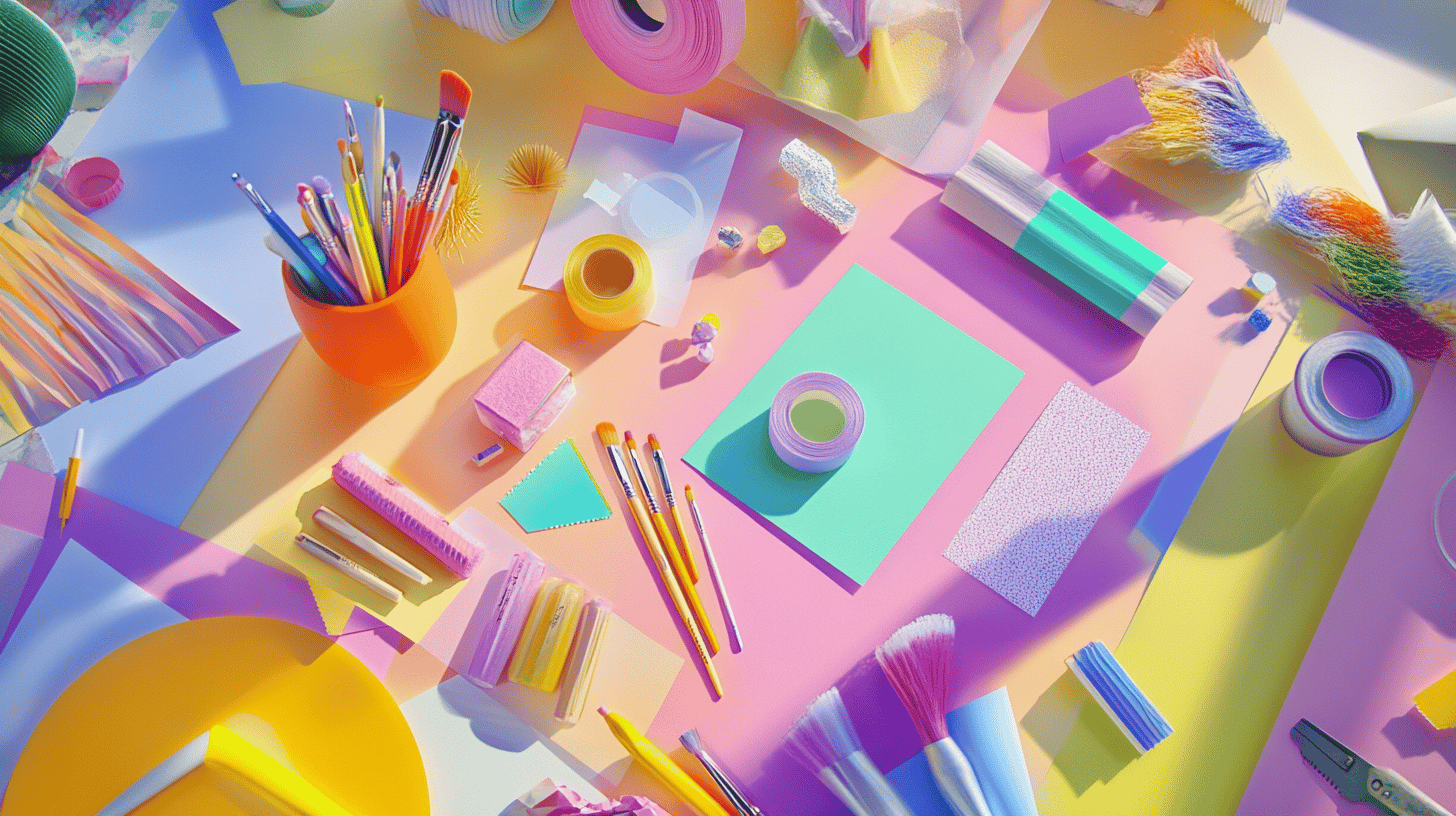The world of crafts is vast and full of opportunities to express your creativity. If you’re just starting out in this fun and colorful world, it’s essential to have the right materials to ensure your ideas come to life in the best possible way. In this article, we’ll explore the 10 best craft materials that every beginner should consider having on hand. Plus, we’ll give you tips on how to use them effectively, helping you create amazing projects! Let’s get started!
1. Craft Paper
Paper is essential for any craft project. There are several types – colored paper, cardboard, kraft paper and tissue paper, among others. For those who are just starting out, having a varied stock of paper will allow you to try out different techniques, from origami to scrapbooking.
Ointment, glue and scissors are essential accessories for working with paper. Try creating cards, boxes or even decorative pictures.
2. Paints and Brushes
A good set of acrylic, watercolor, and gouache paints can work wonders. These paints can be used on paper, wood, ceramics, and more. For beginners, it’s a good idea to have brushes in different sizes so you can explore painting techniques, from fine lines to broad, expressive strokes. We recommend starting with acrylic paints, as they’re easy to use and dry quickly, allowing you to work on a variety of projects without waiting too long.
3. Hot Glue
Hot glue is a versatile item that can bond almost any material. From paper to fabric and plastic, hot glue is perfect for long-lasting joints. However, since its use requires caution due to the temperature, it is recommended to keep it a little away from skin.
4. Colored Adhesive Tape (Washitape)
Colored duct tape is a favorite among crafters. Available in a variety of colors and patterns, it not only adheres well but also adds a decorative touch to your projects. Use it to embellish notebooks, create bookmarks, or even fill your workspace with color and style.
5. Fabrics and Scraps
If you’re interested in sewing projects or even creating art with fabric, it’s a good idea to start with a basic set of scrap fabrics. You can use scrap fabrics to make bags, pillows, or even small pictures. Knowing about different types of fabrics, such as cotton and felt, can be very helpful.
6. Cutting Tools
In addition to a good pair of scissors, consider investing in a utility knife and a cutting ruler. These tools are essential for ensuring clean, precise cuts. A cutting mat, such as a cutting mat, can also be very handy and minimizes damage to your work surface.
7. Fluffy Brushes
These brushes are essential for creating special effects in your projects, such as texturing or even hand painting. With different sizes and shapes, they are perfect for any type of project, whether on paper, fabric or ceramics.
8. Recyclable Materials
A great resource for beginners is to use recyclable materials. Plastic bottles, cardboard boxes, and paper towel rolls can be used for new and innovative experiments. Turning trash into art is a fun way to explore creativity and also contributes to sustainability.
9. Ornaments
Having a variety of embellishments can add that special touch to your creations. Buttons, sequins, ribbons, and even small embellishments can make all the difference in the final result of a project. Play around with different combinations and never be afraid to add decorative elements!
10. Craft Kits
For those just starting out, purchasing a craft kit can be a great option. These kits usually include a selection of commonly used materials, along with instructions and project ideas. They make purchasing simple and ensure that you have everything you need to get started. Look for kits that match your interests, whether it’s painting, scrapbooking, or sewing.
Extra Tips for Beginners
– Organization: Set aside a space in your home to organize your materials. Boxes or cases can help keep everything in order and make it easier to access. – Research and Learn: Look for tutorials online and attend workshops. Don’t be afraid to make mistakes; practice makes perfect! – Have fun: Above all, remember that the purpose of crafting is to have fun and relax. Don't be so focused on perfection; imperfection is what makes your art unique.
Conclusion
Getting started in the world of crafting is an exciting journey! With the right materials in hand, the possibilities are endless. Along the way, you’ll not only develop your skills, but also create objects that reflect your style and personality. Nothing is more rewarding than seeing your ideas materialize before your eyes. So, gather your materials, get to work, and let your creativity flow. And with each project, remember: the only rule of crafting is that there are no rules!


